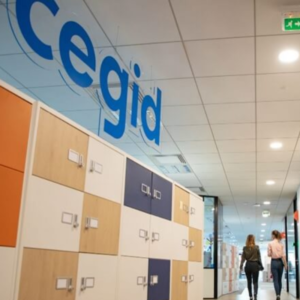Much has been written about the similarities between Marketing and HR strategies. For both disciplines, the customer/employee is placed at the heart of their strategies aimed to understand and meet their needs.
Today, consumers are making new demands of companies. They expect much more and are better informed. They are accustomed to moving around in a paradigm based on transparency and to be the protagonist in their relationships with brands. All this can be translated to the HR field. Additionally, consumers are exposed to the fact that most companies make very similar offers, almost identical even. So, what influences them to ultimately decide to choose a particular product or brand? Some years ago we could say that the determining factor in the decision to buy was the price, but this is no longer true now. Companies have to strive to create an experience that spurs a positive memory of the products or services that “hook” these consumers so they end up”falling in love” with these products or services.
However, if we take this over to the HR scenario, the main goal will be to get employees to fall in love with their companies and convert them into lovemarks for their organizations. Employees, just like consumers, are becoming more demanding when it comes to choosing a job and factors, such as pay, are sometimes no longer a priority, giving way to other ones. Thus the mission of HR managers “will not be so much to manage talent, but to develop positive experiences for the employee”, according to the Deloitte Report on “Global Human Capital Trends 2016”.
Quoting from the latest article by Teresa Niubó, “Employee Experience #EX… Where do we start from?”: “There is a close correlation between Customer Experience and Employee Experience. Improving experience with our clients is one of the main priorities of any business, but how can we improve the experience of our employees? (…) Any HR leader should be focused on providing a human-centric employee experience, using digital technologies that allow experience to be personalized, exciting, convincing and memorable.”
At this point, we need to ask ourselves: How do we apply a Customer Experience strategy to talent management and what role should HR play?
- Get to know your employees: just as in Marketing, one of the first key points to carry out in any strategy is to be clear on the target/cluster we are focused on. The same thing happens in an organization. HR professionals must know their employees well in order to be able to offer them a totally personalized experience that can deliver value to them. HR should at all times control the employee’s customer journey and connections with the organization (team meetings, when requesting vacation, sick leave, access to internal information…)
- Create engagement: HR must take care of creating strong and lasting relationships with employees. To fulfill this commitment, it is essential to promote actions such as: onboarding for new employees, work-life balance policies, compensation policies, promote development plans for continuous learning, establish constant feedback on development, etc.
- Foster a collaborative environment and the use of corporate social networking: to improve internal communication, enhance collaboration and knowledge. When implementing an internal communication system that is available to all employees, regardless of their job, this starts to boost: collaboration, co-creation, team cohesion, innovation driven by the exchange of ideas, proposals, etc… Additionally employee engagement can be increased through “inbranding” to strengthen and promote collaboration between them.
- Definition of KPIs: in the same way as in marketing, set a series of goals/KPIs to find out how the strategies are performing and whether they meet targets. For talent management, setting KPIs can help us detect the qualities that high-or low- performance employees have and this way be able to integrate them in recruitment processes; designing compensation plans for increasing workforce productivity, etc.
In a nutshell, these are some of the steps that can create an unforgettable employee experience. Are you ready to implement this in your organization?






